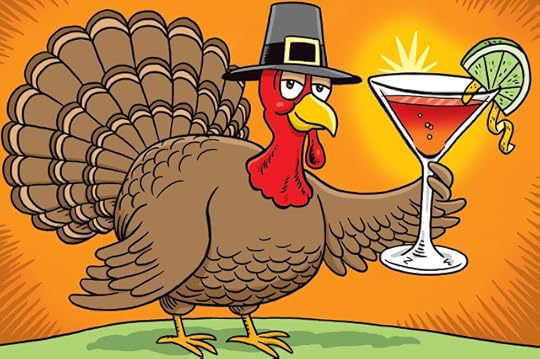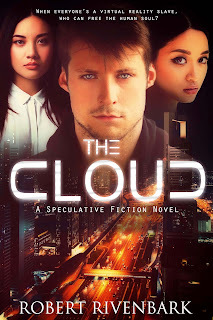Kenneth Atchity's Blog, page 40
November 28, 2022
Story Merchant Books E-Book Deal: Ken's Book Recommendation!
Fossil River by Jock Miller This pedal-to-the-metal speculative thriller revolves around the discovery of a highly territorial colony of predatory dinosaurs in Alaska that has survived undetected for millions of years.
~ Kirkus Review
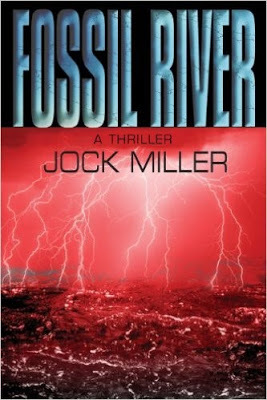
AVAILABLE ON AMAZON
November 24, 2022
Happy Thanksgiving
November 21, 2022
11 Things I Can Tell You Are Wrong About Your Manuscript Without Reading It (Title Shamelessly Borrowed From Sue Grafton at Crimebake)
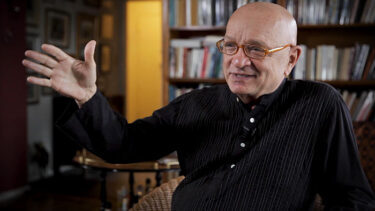
Editor's Checklist, and what to do about it:
1)You're over-using "and," especially as a sentence connector. Remove it and your work will sound much more dramatic and direct.
2)You're making em dashes wrong -- they're like this, not -- like -- this -- or any other way than -- this.
3)It's "Fred said," not "said Fred." "Said Michael," "said Jane," will make your writing sound sing-songy and biblical.
4)You're confusing "its" and "it's," and, no, it's not alright just because they're confusing. They're not: "It's" is short for "it is"; "its" is a personal pronoun, as in "the bicycle, down to its hubcaps..."
5)You're using "parent's" as a possessive plural, when it's singular. Instead, use "parents'" as in "my parents' house."
6)You're confusing "lies" and "lays" and, no, it's not alright to say, "She was laying with him on the bed." Make Fowler's Modern Usage your bedtime reading along with Strunk & White's The Elements of Style.
7)You're allowed one adverb per hundred pages. Search and destroy the others.
8)Remember to show us what's happening in your story, not tell us about it.
9)Your dialogue isn't action that moves the story forward. Root out every piece of dialogue that doesn't contribute to the forward motion of your story.
10)You overuse certain words -- you know what they are. Become aware of them, and don't allow yourself to use them more than once in 10 pages.
11)Your story doesn't really take off until page x. Remove the pages before x.
November 18, 2022
Guest Post: This Emotion by Gary Wenkle Smith

THIS EMOTION
How do you know he is a killer?
He is the one sitting beside me. The only person in the courtroom who is being accused of murder, who says I did it, the killings.
I first met Dennis in West Valley Detention Center, Rancho Cucamonga, California.
Would you come into the jail with me?
The setting is surrounded by thick concrete from the moment you enter the institution. The smell is like no other. Thirty-five hundred men and nine hundred women, their bodily excretions, their inability to engage in routine hygiene—clothing exchange is once a week, and showering perhaps twice—inadequate ventilation, even their breath from the low-grade, poor-quality food adds to the stink that is so oppressive that first time visitors are shocked by the impact of it upon their senses. I am reminded of it at once, and I unconsciously adapt, forgetting it for the moment.
The lobby is large: two sets of glass doors, two restrooms, and a multi-windowed counter, with “Official Visiting” over one window. I have called in advance and I check in at the counter, showing my driver’s license and bar card. From behind two-inch-thick glass, the Custody Assistant accepts my cards and pushes a yellow form under the metal plated drawer under the window, which I fill out and return to her. She calls the unit where I will visit, advising: “One official on the way.” Then she slides a small yellow pass along with my ID and bar card under the window to me.
I take the pass and cards and I thank her. I walk to a steel door with thick glass and waive my yellow paper pass at the deputy sitting in a room to the left of a metal detector. There is a visitors’ window to the left of the door where civilian visitors check in, give their ID and wait for the deputies to run them before they are allowed to enter. It is not uncommon for someone to be cuffed and arrested before their visit, upon a deputy discovering they have an outstanding warrant.
The deputy pushes a switch to the right, and I hear a hissing, then the door opens into the wall, slamming in place. I walk in and pass through a metal detector. I always beep. Most deputies who know me don’t bother with a wand scan of my body. The uniformed deputy is no-nonsense, but over time and routine contact with him he has become civil. He takes my visiting slip, my ID and bar card and begins writing information on his daily log—who I am, my client and his booking number and then hands me a key on a long dirty lanyard with an oxidized brass circle-shaped piece with a hole through it, all held in place on a soldered-closed two inch ring, kept in an old hotel-type squared key box, where he puts my ID and Bar Card.
I thank him and walk out of his office into the room with the metal detector. I stand in front of another steel door, waiting for the vacuum release to engage the hydraulics so it pulls itself into the wall with another loud banging. I step into the hallway. When the door closes behind me it slams and clangs and echoes down the walls and reminds me that I am now locked inside the jail.
I pivot left, and walk down a long polished concrete hallway. The walls are drab yellow, a low energy color. The lighting is bright fluorescent. There is a blue line with arrows pointing toward me every twenty feet directing people coming out of the institution back to another locked exit fifteen feet from the room I just left.
Arrows on the walls with large black letters point ahead, listing units 1-15, one on top of the other. When I reach a doorway, I make my way to the right around a bubble, named by inmates, which is a room with limousine black tinted glass shaped in a semi-circle. I’ve never known what goes on in there. To my right are hallways to units 11 and 12, then a bit further to units 13-15. They are long hallways, painted drab yellow with polished concrete floors.
I continue around the bubble to the left until another hallway comes into view into which I turn right. On the wall in thick black paint are arrows pointing the way to UNITS 1-10. I continue walking until I reach another doorway with another bubble. The arrows point me around the bubble to the right and the first hallway has the bold lettering: UNITS 9-10, the second hallway hold units 7 & 8. I turn down that hallway and walk 200 steps, finally reaching unit 7 on the right, unit 8 on the left. By now, I have forgotten the stench of the place.
I enter a visiting area with one wall full of glass windows and steel circular seats welded to a metal post coming out of the wall in front of each window, and telephones beside each seat with cords six inches too short so visitors have to lean down to their left to speak while visiting. The visitor must sit in the seat and wait for their friend or loved one to make it up the stairs from the room below.
The room is empty today. I can see the bubble behind the doorway into the room with the stairs. I see a man wearing orange standing outside a door the top half of which is probably unbreakable plexiglass, waiting for the door to buzz so he can open it and make his way to the stairs and up to the visiting area. To my immediate left is a wall speaker with a button. I press the button, and moments later a male voice is heard: “Yes.”
“Good morning, Official Visit for Dennis _________.”
“He’s on his way.”
“Thank you, sir.”
On the left there is a locked door. It is a steel door with a see-through window that is very thick. I insert the key and pull open the door, which is very heavy. I step in and there are two doors of the same kind on my right, behind which are visiting rooms for lawyers and other professionals.
The door I have just entered slams, the noise deafening. It is shocking to the senses each time, but I’ve become familiar with it. I enter the second room after inserting the same key, turning the lock the opposite direction of the other door. That one slams shut also as I step into the room.
The horrible stench of the unit hits me. It is much more powerful than in the lobby. It is an overpowering stench. This day it is so strong I am repulsed, wanting to walk out and away.
This room is painted a drab yellow, with unpolished concrete flooring, a pile of trash in one corner of the floor including Kleenex, visiting slips, wadded paper, even gum wrappers. There is a black mesh screen dividing my side from the inmate side. There is a concrete counter that runs under the mesh to the other side so that we can lay our documents, and elbows on it.
Through the window on the door on the inmate side, I watch Dennis climb the stairs slowly. It is obvious he is in pain as he chugs his way up. When he finally reaches the door, he waits for a deputy to press a button buzzing him into the room. He looks at me and smiles. He has a nice face. His hair is sandy brown and shaggy.
The door buzzes and he pulls it open, holding it so it doesn’t slam behind him. When he steps in, I am still standing. I tell him my name and offer my knuckles on the grating that divides us. We bump knuckles. We both sit. Trying to see his eyes I move and adjust my vision through the half inch diamond shaped openings in the mesh. We work together to get a clear view of one another.
I can smell him—his breath, his days-old perspiration clinging to his clothing that is wrinkled and frayed with the letters 3X on the thigh and front of the short-sleeved top. I silently process this sensory information.
He is weary, his eyes with deep crow’s feet, somewhat red, seemingly blurry as he arranges his body on the steel plate upon which he must sit. I know how uncomfortable it is, as I am on the same type seat. I also know that he has had spinal fusion. He is overweight by at least thirty pounds, looking bloated.
I know about the food in WVDC from personal experiences. The menu hasn’t changed in years: Frozen waffles for breakfast, frozen mystery meat sandwiches for lunch, which has an orange dye in in the meat that stains your fingers if you are able to get to the hot water dispenser to try to thaw it; and dinner might be any combination of stuff presented as food, including shriveled corn, some kind of material passed off as meat, and perhaps on a good day a squashed slice of bread.
Supplements of starch and sugar are available through commissary, including Top Ramen, ten cents in the store, a dollar twenty in jail. Milky Way bars are a dollar fifty, and coffee prices change weekly.
There are no hygiene products given, so you are either required to buy your own, or if on welfare, i.e. no money on your books, others in your car—your race—will help you out. Everyone has to shower when allowed lest they begin to stink. A resounding beating is in order for the intentionally unhygienic.
Dennis asks me if I knew Joe, an old friend, one of the Berdoo Hells Angels. I told him I did, and tears poured from him. He said he had been praying I would somehow find my way to him. Joe had spoken of me with praise. Dennis had lived next door to him during his teen years, Joe teaching him how to use a wrench. They had remained friends, but Joe had died, and Dennis did not know who to call to get my name.
I cried with him, already believing we were meant to be together in this thing, the multiple homicide case. He heart-shot three people in his driveway in the desert in the nighttime in the middle of nowhere. He had been sitting in jail for fourteen months, his prior counsel leaving him to wait after only one visit, suggesting he could get him life, plus fifty, instead of 3 lives, plus one hundred fifty, or maybe death.
He had no hope. I felt that, too. He had been alone, unable to mourn, now crazy. Each day spent in conflict with his belief that what he had done was right, but nonetheless being caged and put on show, the accused.
He told me what happened that night, and I knew it was true. I saw it with him as he experienced it, once again, slowly padding his way across the 8 x 10 visiting cell behind the mesh that separated us.
I could go with him because I have been taught to develop my ability to feel with others—to mirror their feelings, to change seats with them and become them, to stand behind them and express what I feel, hoping they repeat my words, confirming that I heard them. I have listened and I have felt, and often their pain is so intense I never leave them, they never leave me.
We would re-visit that night many times before trial.
I believe TLC training has opened psychic abilities to see and understand those with whom I engage, even more so when we are put together on a journey toward trial. Listening, hearing and intuition are all central to TLC training, and I use it constantly.
There are limitations on how we can work in the jail. Dennis could not leave; he could not afford to post the three and one half million dollars bail. I could not stand behind him, but I could mirror what he said, using his gestures, asking him how he was feeling, trying to express what I believe he was feeling, waiting for his confirmation.
It was much more difficult when our close-up vision was blurred by the mesh. It required greater focus, something I have developed over my many years of jail visits. I have been in our various custodial institutions literally thousands of times over the past forty-one years.
Some of what I have learned through Trial Lawyers College must be modified to fit the circumstances, and the person with whom I am working. Dennis was suffering from deep depression and sorrow. For him, life was over. I had to find my way into his world and develop trust so I might be able to explain my idea of how we will present our defense—that he killed those three people in self-defense. Part of the way in is to be able to love my clients. With Dennis, that was not difficult.
Dennis and I shared who we were for seven months while our experts did their work. I grew to love him more each visit. Every week we met and discussed how he felt. Often, he was depressed, and we spent the first hour chatting about things bothering him, working our way into his private hell.
He spoke of the ghosts that visited each night, still tormenting him. How he wished he had died that night so he would never have to think about it again. Recalling his dreams in which I would magically appear and save him. A color emerging in those dreams finally becoming a blue shirt he wore as we walked out of the courtroom together to his freedom beyond the door.
While he spoke, I listened, often mirroring his body language, when appropriate, repeating what he expressed with my body and words. In time, he began to believe that I saw him, felt him, understood him, and would not abandon him.
Before me, he had told his parents to let him go, it was over, because the first lawyer assured him he could get him that deal: fifty to life instead of three life sentences plus one hundred fifty year, maybe death.
Most frequently, we went through that night of the killings, step by step, remembering how he had felt while it was happening.
It was slow motion, a sensation I had experienced a couple of times before—once when a friend was killed as we raced down the street, him on his motorcycle, me in my Trans Am, and a car turned in front of his motorcycle. The other time I was thrown off my dirt bike.
When he spoke of the attack, I asked him to move through it slowly. I did the same, mirroring his motions on my side of the mesh. He heard the dogs barking and went out to see if it might be a coyote. I heard them also.
He walked to the corner of the driveway where the chain link fence ended before it turned the corner. I stood there with him. I saw the horror on his face when the giant with a clown mask came out of the dark and grabbed him by the shoulder.
My face filled with that fear, I felt it, the terror, the adrenaline rush as we blocked the arm and began stumbling backward across the driveway, drawing from our front left pocket our snub nose .357 five shot Smith & Wesson handgun we had been carrying day and night for the past eighteen months.
We drew the gun slowly with our left hand and were grabbed by the hair on the back of our heads. We felt the pull toward the ground and brought our gun across our chest and aimed at the body beside us and fired. The explosion deafened us, and the flash of light blinded us.
The hand let go of our hair and we watched a shadow shuffle off with a strange movement of short steps, into the darkness. We turned and two more shadows were charging us. We fired and their eyes lit up like demons. We fired again, both times the gun recoiling, the flash again blinding us, the sound more a thudding. We watched both shadows turn and shuffle off, that same strange way of moving with measured steps, into the black of the night. We saw them no more.
We stayed still, waiting, wondering whether that really happened, and if so, where had they gone? We heard our hearts beating, but no other sounds.
I asked Dennis to tell me where he was, what he was feeling. He froze in place. I froze with him and waited. Several minutes passed before he tried to leave the cell. When he tried to pull it open, I knew he was going into his house to call 911. I asked again. “Dennis, where are you?” He slowly turned and looked at me.
He said: “I’m here now.”
“I went there with you,” I told him.
“I know.”
We knew we were ready for trial when we had been through it all several times.
We worked on the terror he felt as each day began. They were asleep, finally, having thrown trash into his yard the night before. They stayed up into the wee hours, talking loudly, several of them, leaning on the fence each night, calling his name, waking him. So, he built the wall.
It took months of digging holes large enough to put railroad ties in, tamping the sand to keep them in place. Each day ended in physical agony. He showed me how hard he worked, digging, bending, lifting, shoveling, and tamping. Finishing by mid-morning before the creatures came out and started with their threats.
The first threat came before the wall. Adam walked to the fence while Dennis worked on the ground beneath it. He leaned on the fence, Dennis’ fence, his huge arms bulging, and said: “I’m here to evict some people.”
Dennis tensed. He had seen Adam. He was an unusually large man, and now Dennis knew he was mean and had ill will toward him.
“How did you feel?”
“Scared. I asked him ‘oh really, who?’ and he said I’d find out. I told him I was a Boy Scout.”
“What did you mean?”
“I’d be ready.”
Several months passed before Dennis made it out of the desolation of despair and was ready to communicate, to share, to be challenged in front of a jury.
* * * * *
We set the case for trial.
I have spent a good deal of time training in voir dire. Selecting a jury to hear a triple homicide case was exciting.
I begin with the presumption of innocence. I share that most people, myself included, don’t really presume people innocent, that we always think the worst, that when I see a person sitting where the defendant sits and I wonder what they did. “Who else feels that way?”
It always gets a good conversation going, and that is what I want, a conversation. Just a bunch of good folks having a talk about the law, and the idea of killing and how they felt about those things, I show them mine, they show me theirs. It works.
Few of us admit to a willingness to let others take our lives. I’ve spoken with a couple of people who said they would never kill, not even for loved ones. I thanked them for their honesty. It takes days to pick a jury in a murder trial, and judges usually don’t rush the process.
We have to be comfortable in our own skin to stand and engage people about their beliefs, embracing each word they offer, thanking them as we go, speaking directly to them as though there were no one else in the room.
Cross-examination is probably my favorite activity in life. The state of ecstasy lasts longer than any other—it goes on and on. The lead detective, a Sergeant by the time of trial, wrote a report that was vague, but between the lines I knew he was trying to tell the truth. When he entered the courtroom that first day after Opening Statements, in uniform, ready to testify, I approached him.
“Sergeant, I’m Gary Smith. I represent Dennis. I’ve spoken with a lot of people about you.”
“You investigated me?”
“Yes, and they all said the same thing. Do you want to know what they said?”
“I don’t know.”
“They all said you are an honest man, and I’m counting on it.”
Most cops are good witnesses. They show up in uniform. When called they stroll to the stand, smiling at the jury. They are sworn, sit and face the jury, some offer a greeting.
Our Sergeant was subdued. He did not look at the jury during direct. On cross, he engaged me, and I took him back to that night, what he saw when he arrived. The jury could see and feel there was something between us.
The Sergeant answered all my questions truthfully, which did not help the prosecution, including that it was obvious the shootings took place on Dennis’ driveway.
The allegation was that Dennis had laid in wait—ambushing the three deceased, them dropping to the ground where they were shot, in the dirt road in front of his house—was slowly dispelled by the prosecution witness, the case agent.
I knew a lot about the only eyewitness. Part of my belief system is that I should always know more than the opposition. Some of that comes from knowing my clients. I had a good investigator, too.
Everyone lies at some point in their lives, and in criminal cases witnesses on both sides lie. Some lie because of their fears of being part of the accused. Some lie because they want the accused to be convicted, others are protecting the accused.
I knew that the eyewitness, Whitney, was a speed user. I know a lot about that drug and what it does to people. I heard it in her voice when she was being interviewed that night by one of the detectives.
I instructed my investigator how to proceed with her: bring her in, encourage her to be open, assure her you want to hear her story, thank her when she shares.
I knew she wanted to talk, and that she would be under the influence when interviewed. Speed users are not occasional users.
I knew that once she started telling, she would not be able to stop. She came back for a second video interview. Rick, my investigator, knew where to take her and she told it all.
The physical and forensic evidence confirmed Dennis’ story in every detail. I needed Whitney to give it up, confirm what I knew. At first, she was combative. A witness can only remain that way if you join them.
When I took Whitney on a journey, I did my best to show the world from her eyes, and help the jury see it, to know how she felt, to understand why she lied, engaging her with a discussion about the events of that night.
I took her to her lies. She had forgotten that my investigator had her on video, admitting her lies, telling the truth.
I understood why she lied, and so did the jury. She went with the deceased to “fuck him up,” to “kick his ass.” They were all wigged on speed, or alcohol, Fentanyl and some pot. They were two huge men and a large woman, and Whitney was with them.
She was in the midst of the killings, and she wanted out. She knew she might be criminally liable—we all did.
She set herself anywhere from eighteen to thirty-five feet from the shootings, yet she saw it all.
It took repetitive cross to end the days of her testimony with the same story: they went there to get Dennis and he got them.
The prosecutor repeatedly took her back on re-direct to her lies, only emphasizing the magnitude of them, and I walked her through the truth, again and again.
It was somewhat cathartic for her, although her addiction did not allow much room for introspection.
I showed my empathy by repeating her words with enthusiasm. I did not mock her but pushed her to embrace the truth each time.
The prosecutor lost all respect from the jury by getting her to repeat her lies, only to be reminded of the truth.
Dennis and I never broke faith with the jury.
The trial ran Monday through Thursday for three weeks. I presented Dennis as a witness on the final day.
It was late evening at the jail, and the place was noisy, even upstairs in our visiting room. Men drank coffee and ate candy and other supplements purchased through commissary each week. They were jacked up and restless with nowhere to go. I could feel the tension, the edge of violence ever-present in custodial settings.
Dennis was scared about testifying. I could smell his fear, taste it. He hadn’t been allowed to shower all week because he had been transported from West Valley Detention Center in Rancho Cucamonga to Victorville each morning, eating only cold cereal, a peanut butter and jelly sandwich for lunch—squashed flat and mushy, returning late at night, fed a sandwich of ice-cold mystery meat, then left to his own devices.
The smell is unique to him, but I know the sensation it invokes in me. I know the smell of fear and it is a reminder to be direct about what I am seeing, what I feel, how I know it.
We are intimate, and our relationship is based upon trust at the very core of our beings. If I were less than fully engaged, it would be a breach of trust. I was tired, but so was Dennis. His days were so much longer than mine.
We discussed his fear and went deeper to the source. We walked through that night again. I felt the terror they had instilled in him over those many months before he killed them.
I felt the agony, the depression, the relentless anxiety, the remorse, the betrayal of the government, but there was light in the hope and trust he placed in me.
Again, we practiced his time on the stand telling the story, the truth that would set him free. Moving my arm toward the jury box we have created in his cell, I asked him: “Please tell the jury, did you shoot those people?”
We had a reminder, me using my arm to direct his attention to the jury should he begin to look at me. The number one rule: the jurors are the most important people in his life.
That night, Dennis was also tired and on edge. He was angry about what the deceased made him do. He was angry that he was being prosecuted, and that people had lied about him. He resented the prosecutor promoting Whitney’s lies over and over. I let him vent.
While he did, I mirrored his body language. He knew what I was doing.
Finally, he agreed that if he showed his anger, the jury would not understand. If he showed his feelings beneath the anger—the pain he felt, they would love him. That had been our mantra throughout our work. If you bond with the jury by opening yourself to them, letting them see you in your pain, they will not hurt you.
When Dennis turned to the jury and, with each question I posed, told them what he did, he was talking to old friends, just like we had spoken together, telling the story of the case. When I asked him if he shot Adam, Angela and Robert, he said he had, and he told them why. He spoke of the endless days of threats and torment, sleeping with the gun, keeping it in his pocket, the dreams of them killing him. The attack in the dark with high winds screaming, as though the devil himself was director of the scene unfolding. He told them it was his worst nightmare. He wept, and they did too.
When I closed, we all wanted to be able to defend our lives like Dennis did, and still have a life in the world. Dennis spoke for all of us. We all wanted to free him of his burden. We felt his pain. He was a killer, but it was necessary.
* * * * *
They sent us out that courtroom door, Dennis in his blue shirt.
The jury loved Dennis, and they knew I loved him.
It all comes from this emotion.
November 16, 2022
Book Marketing Buzz: Interview with Literary Agent & Hollywood Producer Ken Atchity

Ken Atchity, who has successfully negotiated hundreds of publishing and Hollywood deals, edited and written numerous books, was a professor of comparative literature and creative writing, and produced over 30 stories for television and film, is interviewed here by BookMarketingBuzzBlog:
1
1. Ken, are you working with authors today?
I certainly am, more than ever, now that I’ve found a better way to do it. Through my webinars and storymerchant.com services we can help with nearly every writer’s needs.
2. What are some of the biggest properties that you’ve handled?
By far the biggest to date is THE MEG, which has passed half a billion dollars at the box office! Meg 2: The Trench release date is August 4, 2023!
3. What do you enjoy about working with creative talent?
I enjoy almost every aspect of it, except for the bad craziness part. I love discovery, development, perfecting the story, publishing the story, and producing the story.
4. As an author yourself, what advice do you have for other struggling writers?
Never stop learning your craft, never stop being grateful that you’re a writer, and never stop writing.
5. What trends do you see in entertainment and book publishing?
The trend is toward an insatiable demand for better and better stories. It’s the greatest time for storytellers since the world began talking.
6. You used to be a frequent columnist for The Los Angeles Times Book Review.How have the changes in the news media impacted the book world?
Changes have made it even more difficult for books to become visible, though the internet offers countless ways to achieve visibility.
7. What’s a boy from Louisiana doing in LA and NYC?
Just back from a trip to Louisiana, I ask myself that every day. I’m the luckiest guy in the world to have spent a lifetime in the story marketplace directing the power of stories.
8. Which genres excite you the most? Why?
Action and thrillers are my favorites, as well as Christmas stories, and powerful dramas; all of them have a huge attraction to the marketplace.
For more information, please consult: www.storymerchant.com
November 14, 2022
#FREE November 8 - November 12! Kenneth Atchity's "TELL YOUR STORY TO THE WORLD & SELL IT FOR MILLIONS"

If there's a story distracting you during the day and keeping you awake at night, ask yourself: Is this a great story? If your answer is yes, then this is the book for you.
Learn from Ken Atchity and Lisa Cerasoli about how to write your own top-notch page-turner and then how to navigate the cutthroat publishing and entertainment business.
Read Tell Your Story to the World & Sell It for Millions Today: https://lnkd.in/grCsw2Xz
November 9, 2022
New From Story Merchant Books: id by Kevin Spark
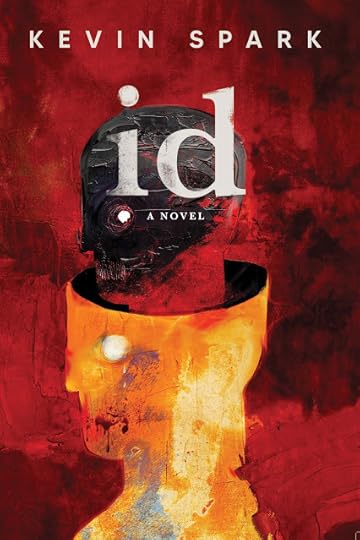
Available on Amazon
Dr. Shelly, a brilliant psychologist, forever haunted by her father and his murderous past, is driven by the need to find out why we do the things we do? Is the concept of free will just a concept and nothing more, a construct that blinds us to a less palatable truth, that who we are is predetermined and encoded at birth? Does anyone really choose to do the bad things we do or are we just doing what comes naturally?
Shelly constructs an experiment using a sensory deprivation tank and virtual reality, allowing the darkest part of ourselves, the id, to run free. Unencumbered by morality or remorse, Shelly finds the perfect subject in Adam. A borderline psychotic born into a world of neglect and crime. Delving into the deepest pits of his subconscious, Shelly surfaces with far more than she bargained for.
Detective Hopper, responsible for Adam’s capture, remains a broken man. After suffering a breakdown due to the escalation of his own violent behavior, he is placed under the care of Dr Shelly. Encouraging him to go looking for his own redemption, Hopper becomes a pawn in her web of deception until the lines of reality are redrawn as Hopper and Adam come full circle to an explosive end.
November 4, 2022
Award Winning, Nominated Atchity Productions!

 A STORY MERCHANT company
A STORY MERCHANT company
The Meg - Awards
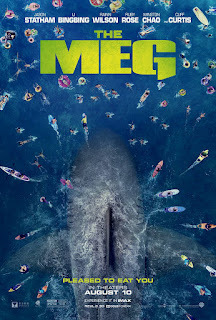 2 wins & 5 nominations
2 wins & 5 nominations 2021
New Zealand Cinematographers Society
Won, Gold Award
Specialised Cinematography
Kina Scollay
Underwater photography
2019
Golden Trailer Awards
Nominated, Golden Trailer
Best Home Ent Horror/Thriller
Warner Bros. Pictures, Trailer Park
Nominated, Golden Trailer
Best Billboard
2019
Young Artist Awards
Nominated, Young Artist Award
Best Performance in a Feature Film: Supporting Young Actress
Shuya Sophia Cai
2018
Chinese American Film Festival (C.A.F.F.)
Won, Golden Angel Award
Best Actress
Bingbing Li
Won, Golden Angel Award
Best US-China Co-Production Film
2018
Golden Trailer Awards
Won, Golden Trailer
Golden Fleece
Warner Bros. Pictures, Trailer Park
2018
IGN Summer Movie Awards
Nominated, IGN Award
Best Action Movie
2018
New Zealand Cinematographers Society
Won, Gold Award
Specialised Cinematography
Andrew McGeorge
Kennedy Detail - Awards
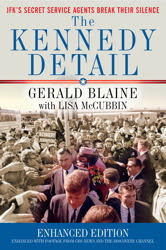
1 Nomination
2011
News & Documentary Emmy Awards
Nominated, Emmy
Outstanding Historical Programming - Long Form
Lisa McCubbin (producer), Kenneth Atchity (executive producer), Gerald S. Blaine (producer), Brooke Runnette (executive producer), Chi-Li Wong (executive producer), Grant Axton (producer), David Garfinkle (executive producer), Jay Renfroe (executive producer), Vince DiPersio (co-executive producer), Liza Maddrey (producer) Discovery Channel
Erased - Awards
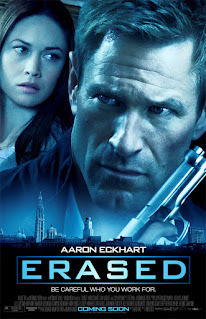 1 win & 2 nominations
1 win & 2 nominations 2015
SOCAN Awards
Won, SOCAN Award
Domestic Feature Film Award
Jeff Danna
2014 - Jutra Awards
Nominated, Jutra
Best Make-Up (Meilleur Maquillage)
Colleen Quinton
Nominated, Jutra
Best Editing (Meilleur Montage Image)
Dominique Fortin
Hysteria – Awards
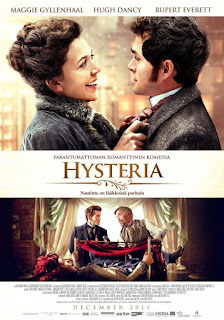
2 nominations
2012
Casting Society of America, USA
Nominated, Artios Award
Outstanding Achievement in Casting - Feature - Studio or Independent Comedy
Gaby Kester (casting director)
2011
Rome Film Fest
Nominated, Golden Marc'Aurelio Award
Tanya Wexler
Gosepl Hill – Awards
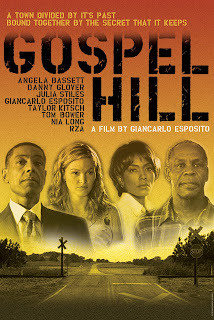
2 wins
2009
Nashville Film Festival
Won, Rosetta Miller Perry Award
Giancarlo Esposito
2008
Ft. Lauderdale International Film Festival
Won, Jury Award
Seashell Best of Fest
Giancarlo Esposito
Adam Resurrected - Awards
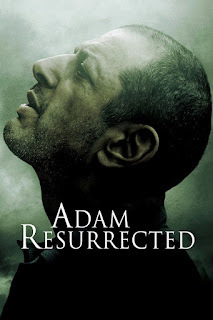
1 win & 1 nomination
2009
Valladolid International Film Festival
Nominated, Golden Spike
Best Film
Paul Schrader
Won, Best Music
Gabriel Yared
Joe Somebody - Awards
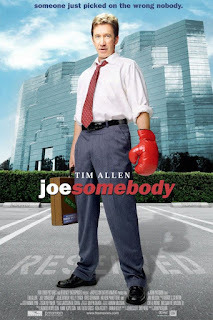
1 nomination
2002
Young Artist Awards
Nominated, Young Artist Award
Best Performance in a Feature Film - Leading Young Actress
Hayden Panettiere
Falling Over Backwards - Awards
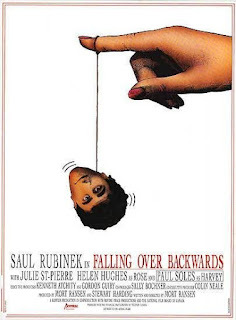
4 nominations
1991
Genie Awards
Nominated, Genie
Best Achievement in Sound
Abbey Neidik National Film Board of Canada (NFB)
Nominated, Genie
Best Performance by an Actor in a Supporting Role
Paul Soles
Nominated, Genie
Best Sound Editing
Diane Le Floc'h, Gudrun Christian, Abbey Neidik, Andy Malcolm, Michele Cook
1990
Valladolid International Film Festival
Nominated, Golden Spike
Best Film
Mort Ransen
Angels in the Snow - Awards

1 nomination
2016
Young Artist Awards
Nominated, Young Artist Award
Best Performance in a TV Movie, Miniseries, Special or Pilot - Young Actor
Kolton Stewart
The Lost Valentine - Awards
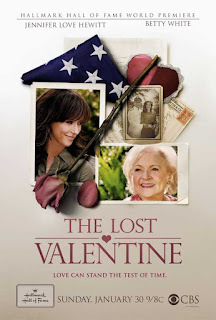
1 win & 6 nominations
2012
Movie Guide Awards
Nominated, Grace Award
Most Inspirational Television Acting
Betty White
Nominated, Grace Award
Most Inspiring TV Program
Nominated, Grace Award
Most Inspirational Television Acting
Katie McGrath
Nominated, Grace Award
Most Inspirational Television Acting
Sean Faris
Won, Faith and Freedom Award
Television
2012
Screen Actors Guild Awards
Nominated, Actor
Outstanding Performance by a Female Actor in a Television Movie or Miniseries
Betty White
2011
Gold Derby Awards
Nominated, Gold Derby TV Award
TV Movie/Mini Supporting Actress
Betty White
Story Merchant has experience in all realms of entertainment placement, from television series, specials, and movies, to studio, mini-major, and independent feature films.
As a producer’s representative, our team analyzes a film’s potential and determines the best distribution channels, whether theatrical, DVD, television, or some combination of the above. With our experience in the international market, we also identify the sales company that best fits an individual film based on our relationships with key executives at dozens of sales companies. Once we identify the best suited sales company, we negotiate all terms of the sales agency agreement to the producer’s and his financer’s best interests.
We focus on securing the most trustworthy distribution avenue that will maximize audience outreach. Our management of the film’s distribution guarantees that the producer retains control of the film’s success.
Contact Ken Atchity for more information.
November 2, 2022
The reviews are in! "The Cloud" is capturing the hearts and minds of readers.
October 31, 2022
Belvedere retired Secret Service agent shares his ‘Travels with Mrs. Kennedy’
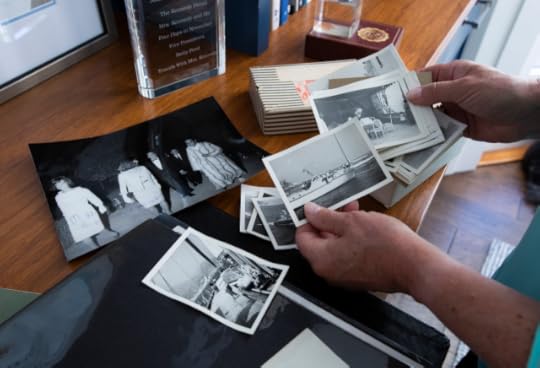
Clint Hill has never been one for awards or accolades. The retired Secret Service agent thought he was just doing his job when he jumped up heroically onto the back of the limousine carrying President John F. Kennedy in Dallas on Nov. 22, 1963, after gunshots were heard in an effort to protect him and First Lady Jacqueline Kennedy — a historic image that has become synonymous with the heartbreaking day. He is credited with saving Jacqueline Kennedy’s life, and was awarded the U.S. Treasury Department’s highest civilian award for bravery a month later.
It’s a medal Hill didn’t think much about until nearly 60 years later when he planned to sell his former house in Alexandria, Virginia, in 2019. While he thought he’d sorted through what was of value, his co-writer and now wife, Lisa McCubbin Hill, convinced him that they needed to finish cleaning up the house themselves, locate the missing medal and not allow strangers to determine “what was trash and what was history.” He agreed.
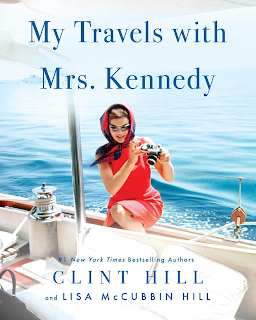 “I never wanted it, never thought I deserved it,” the 90-year-old Belvedere resident writes about the medal in “My Travels with Mrs. Kennedy,” which he co-wrote with his wife, whom he married in 2021. “I didn’t see myself as brave. I was just doing my job. As a Secret Service agent on the White House detail, I had trained for that moment. Trained to jump into the line of fire, to be a human shield for the president, the first lady, or whomever we were assigned to protect. But I would never get over the feeling that if only I had reacted a little bit quicker — one second, or maybe half a second — I wouldn’t be here, and there’d be no damn medal.”
“I never wanted it, never thought I deserved it,” the 90-year-old Belvedere resident writes about the medal in “My Travels with Mrs. Kennedy,” which he co-wrote with his wife, whom he married in 2021. “I didn’t see myself as brave. I was just doing my job. As a Secret Service agent on the White House detail, I had trained for that moment. Trained to jump into the line of fire, to be a human shield for the president, the first lady, or whomever we were assigned to protect. But I would never get over the feeling that if only I had reacted a little bit quicker — one second, or maybe half a second — I wouldn’t be here, and there’d be no damn medal.”They found an old streamer truck that hadn’t been opened in 50 years. It was a treasure trove of his four years with Jacqueline Kennedy after being assigned to her detail in 1960 — an array of signed photos, mementos and handwritten notes from their travels around the world, including Paris, Pakistan, India, Morocco and Mexico.
Top Stories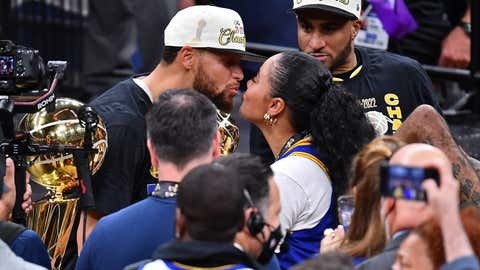 READ MORE
READ MORE


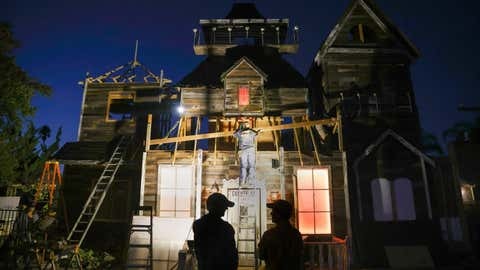 Steph Curry, Ayesha Curry sell Bay Areahouse for millions of dollars
Steph Curry, Ayesha Curry sell Bay Areahouse for millions of dollars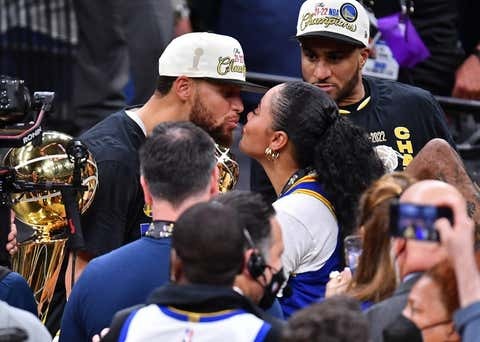
The Hills share these rare stories and some never-before-seen photos as part of “My Travels with Mrs. Kennedy,” their fourth book together, which they will discuss with Book Passage co-owner Elaine Petrocelli at 1 p.m. Saturday at the Corte Madera bookstore.
Amazing mementos
“It took on a life on its own. We were just looking for a project during lockdown and it really became something really therapeutic for Clint, for both of us,” McCubbin Hill says. “He has such an incredible memory and some of the stories he had told me before, but it was amazing to find those mementos.”
He shares stories of the hundreds of thousands of people who lined up to see the Kennedys in Paris, how Jacqueline Kennedy charmed her way to letting the “Mona Lisa” be loaned from France, accidentally eating cannabis in a “mahjoun” in Morocco and how she connected with the late Queen Elizabeth II about their similarities.
“They were close in age. Four years apart in their 30s,” Hill says. “They both had small children, they both loved horses. They both were in jobs they didn’t anticipate when they were youngsters.”
Some of the found items include a signed photo of Jacqueline Kennedy with President Kennedy, the late André Malraux, the French minister of cultural affairs, and his wife that Jacqueline Kennedy gave him in 1964; intimate photos with her children in Virginia, as well as Hill’s notebook detailing their constant travels in 1964, the year after the assassination, a time he wasn’t ready to talk about in his previous books.
“And that’s another theme in that book, that the travel helped both of them cope with the tragedy,” McCubbin Hill says.
After spending time with Jacqueline, Caroline and John Jr. Kennedy for a year after the assassination, Hill was reassigned to the White House in November 1964 and eventually became the special agent in charge of presidential protection during Lyndon B. Johnson’s administration. Hill, who started as a Secret Service agent in 1958, served five presidents — Eisenhower, Kennedy, Johnson, Nixon and Ford — until 1975.
“There was a great group of people involved,” he says. “The Secret Service at the time was very small, with around 269 agents in the entire organization worldwide, and only about 30 assigned to the White House. It was a great camaraderie and there’s a group of us that are still close today.”
Although Hill once dreamed of being a history teacher and athletics coach, when he finally started looking at jobs after college and being drafted in the United States Army, where he was a special agent in the Army Counter Intelligence Corps, it didn’t give him any “warm and fuzzy feelings.”
“I decided I would try to get a job in some way similar to what I had been doing in the military,” he says.
And the rest was history.
Special bondIt’s still hard for Hill to put into words the bond that he shared with Jacqueline Kennedy, a “down-to-earth” woman who spoke multiple languages and mingled easily with heads of state and others she came across in her travels, a loving mother who doted on her children and who blossomed in front of Hill’s eyes after being thrust into a role she didn’t choose for herself. It was important for him to show all these sides to her, to showcase the woman he admired and respected, and how she was really like.
“People commented she was remarkable as an ambassador. She did more good for the country than other ambassadors,” he says.
“America was beloved around the world in large part due to her,” McCubbin Hill adds. “She was able to connect with people all around the world. You can see in the photographs thousands of people who would come to see her wherever they were. They just loved her.”
Kirkus Reviews calls their book a “fond remembrance of a glamorous, bygone era.” According to Publishers Weekly, it’s “a page-turning portrait of the Camelot era.”
Hill told himself he’d never write a book or talk to a reporter about his experiences in the Secret Service, especially not what he went through in 1963. But, his friend Gerald S. Blaine, a former U.S. Secret Service agent who was assigned to President John F. Kennedy and was also present at the assassination, convinced him to do an interview with McCubbin Hill for the book they were writing together called “The Kennedy Detail” in 2009.
“I helped her and did research for her, then the publisher asked me to go along on the book tour because I was very knowledgeable about the subject matter and so I did,” he says. “I got to know Lisa much better. We had a good relationship and I trusted her and we got closer and closer.”
He began to open up to her about his experiences and decided to finally write a book with her, “Mrs. Kennedy and Me,” which came out in 2012.
“He had been disgusted about a lot of the things that had been written by friends of friends of friends, people that didn’t really know her and I said, ‘If you write a book, it could be a tribute to her and you can choose what to put in and what to leave out and nothing salacious’ and he realized he wanted to do that,” she says.
Feeling of failure
As their relationship deepened, it was therapeutic for him to share things with her and be able to write about his experiences, especially with what happened in 1963. In their latest book, he shares his experiences with PTSD and a suicide attempt after he walked into the ocean in 1963 and was pulled from the water by a police officer.
“I had that feeling of failure because of how I grew up,” he says. “My dad taught me that you were given a job to do, you do that job to completion, right and properly. And then you can start something new. We didn’t finish that job, protecting the president, we failed and that’s been with me ever since. … Once I met Lisa, I began to unload the things I had built up in my brain regarding the assassination, all the things around it. It was very cathartic, the more I talked to her and subsequently write books, and talk to the general public, it was all in my best interest. I am fortunate that I did that, and I encourage anyone who is suffering from PTSD to find someone they trust and talk about the situation and go through what happened.”
When the Hills went through that oversized trunk in 2019, memories came flooding back to him. And he’s glad he’s able to share them about the woman whose time with he’ll always cherish.
“When I look at these photographs of Mrs. Kennedy as we traveled through Europe and Asia and South America, I realize now what a privilege it was to have been part of those private, joyful moments she experienced,” he writes.
Read more Colleen Bidwill | Assistant Lifestyles EditorColleen Bidwill is a lifestyles reporter and calendar editor.cbidwill@marinij.com Follow Colleen Bidwill @colleenbidwill
